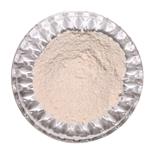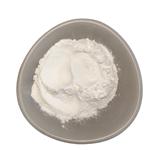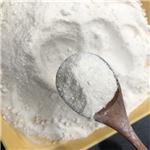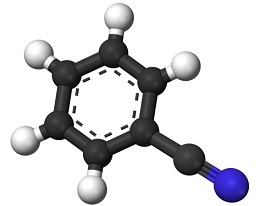What is 2-Chloroethylamine hydrochloride?
Aug 11,2020
2-Chloroethylamine hydrochloride (C2H7Cl2N, CAS registry No. 870-24-6) is a white to light beige crystalline powder. It is soluble in water and stable at room temperature in closed containers under normal storage and handling conditions. It should store in a tightly closed container, in a cool, dry, well-ventilated area away from incompatible substances and should be protected from moisture.
2-Chloroethylamine hydrochloride is an important fine chemical intermediate. It can be used for the synthesis of fluvoxamine maleate, which is an important antidepressant drug[1]. 2-Chloroethylamine hydrochloride can also be used as the substrate to synthesize 2-(2'-Aminoaryl)oxazolines and their derivatives, which have been studied as ligands for a variety of metal chelates and are known to possess biological activity in both free ligand and chelated forms[2]. Meanwhile, 2-chloroethylamine hydrochloride can be used for chemical modification of chitosan to improve the biological activity of chitosan. For example, 2-chloroethylamine hydrochloride was chose to give aminoethy group at C6 positon of chitosan to form O-aminoethyl derivative: N-trimetyl quaternary ammonium salt chitosan (TMC), which had better antifungal activities than chitosan[3]. 2-Chloroethylamine hydrochloride could be also used for the synthesis of another modified chitin: poly(aminoethyl) modified chitin (PAEMC), which had good solubility in aqueous solutions over the pH range of 3-12, and also possessed high antimicrobial activity against Staphylococcus epidermidis, Staphylococcus aureus, Pseudomonas aeruginosa, Escherichia coli, Bacillus proteus, and Klebsiella pneumoniae, commonly causing chronic wound infections[4].
2-Chloroethylamine hydrochloride can also react with hydroxypropyl starch (HPS) to form aminoethyl hydroxypropyl starch (AEHPS), which can react with collagen peptide (COP) by using microbial transglutaminase (MTGase) as biocatalyst to synthesize aminoethyl hydroxypropyl starch collagen peptide (AEHPS-COP). The AEHPS-COP showed a promising potential application in cosmetic, biomedical and pharmaceutical fields with improved in vitro antioxidant activities[5]. 2-Chloroethylamine hydrochloride can be also used for the synthesis of hydroxypropyl methyl cellulose (HPMC) derivative: nisin grafted aminoethyl hydroxypropyl methyl cellulose (AEHPMC), which showed increased antioxidant activities and radical scavenging activities[6]. 2-Chloroethylamine hydrochloride can be also used for the synthesis of surface active agent, such as quaternary ammonium cationic surfactant (N-octadecyl-N,N'-dimethyl-ethane-1,2-diamine, C(18)DEDAM)[7]. 2-Chloroethylamine hydrochloride can be also used for carbon dioxide capture in the presence of an alkali, e.g., NaOH under ambient conditions based on chemical absorption[8].

Fig 1. Chemical structure formula of 2-chloroethylamine hydrochloride
Reference
[1].Rao, C. T.; Rajamannar, T.; Jadav, K. J.; Rao, C.; Shah, H. A.; Chitturi, T. R.; Thennati, R.; Trinadha, R. C.; Shah, H.; Chitturi, R. T. Preparation of fluvoxamine maleate from 5-methoxy-4'-trifluoromethyl valerophenone oxime and 2-chloroethylamine hydrochloride. BE1012819-A6; CH691124-A5; US6433225-B1; IT1319242-B; IN186677-B.
[2].Hunt, D. A., An improved method for the preparation of 2-(2 '-aminoaryl)oxazolines from substituted isatoic anhydrides and 2-chloroethylamine hydrochloride. Organic Preparations and Procedures International 2007, 39 (1), 93-96.
[3].Wei, L.; Zhang, J.; Luan, F.; Tan, W.; Li, Q.; Dong, F.; Guo, Z., Synthesis, Characterization, and the Antifungal Property of Aminoethyl Chitosan Quaternary Ammonium Salts. Starch-Starke 2018, 70 (5-6).
[4].Liang, S.; Dang, Q.; Liu, C.; Zhang, Y.; Wang, Y.; Zhu, W.; Chang, G.; Sun, H.; Cha, D.; Fan, B., Characterization and antibacterial mechanism of poly(aminoethyl) modified chitin synthesized via a facile one-step pathway. Carbohydrate Polymers 2018, 195, 275-287.
[5].Wen, H.; Hu, J.; Ge, H.; Zou, S.; Xiao, Y.; Li, Y.; Feng, H.; Fan, L., Preparation and characterization of aminoethyl hydroxypropyl starch modified with collagen peptide. International Journal of Biological Macromolecules 2017, 101, 996-1003.
[6].Fan, L.; Hu, J.; Hu, Z.; Peng, M.; Wen, H.; Li, Y.; Wang, T., Preparation and characterization of aminoethyl hydroxypropyl methyl cellulose modified with nisin. International Journal of Biological Macromolecules 2016, 89, 62-69.
- Related articles
- Related Qustion
See also
1H-isoindole-1,3(2H)-dione, 2-[[(5S)-2-oxo-3-[4-(3-oxo-4-morpholinyl)phenyl]-5-oxazolidinyl]methyl]- is an important intermediate for the synthesis of rivaroxaban, which is an anticoagulant and the first orally active direct factor Xa inhib....
Aug 11,2020Pharmaceutical intermediatesBenzonitrile is the chemical compound with the formula C6H5(CN), abbreviated PhCN. This aromatic organic compound is a colorless liquid with a sweet almond odour. It is mainly used as a precursor to the resin benzoguanamine.....
Aug 11,2020Dyes and Pigments2-Chloroethylamine hydrochloride
870-24-6You may like
- What you need to know about ceramides?
Apr 17, 2024
- A formaldehyde releasing agent: Quaternium-15
Jan 12, 2024
- Oleamide: Physiological effects
Jul 18, 2023
2-Chloroethylamine hydrochloride manufacturers
- 2-Chloroethylamine hydrochloride
-

- $0.00 / 1kg
- 2023-10-09
- CAS:870-24-6
- Min. Order: 1kg
- Purity: 0.99
- Supply Ability: 20tons
- 2-Chloroethylamine hydrochloride
-

- $30.00 / 1KG
- 2023-09-06
- CAS:870-24-6
- Min. Order: 50KG
- Purity: 99%
- Supply Ability: 500000kg
- 2-Chloroethylamine hydrochloride
-

- $10.00 / 1KG
- 2023-03-06
- CAS:870-24-6
- Min. Order: 1KG
- Purity: 99.8%
- Supply Ability: 100000kgs





